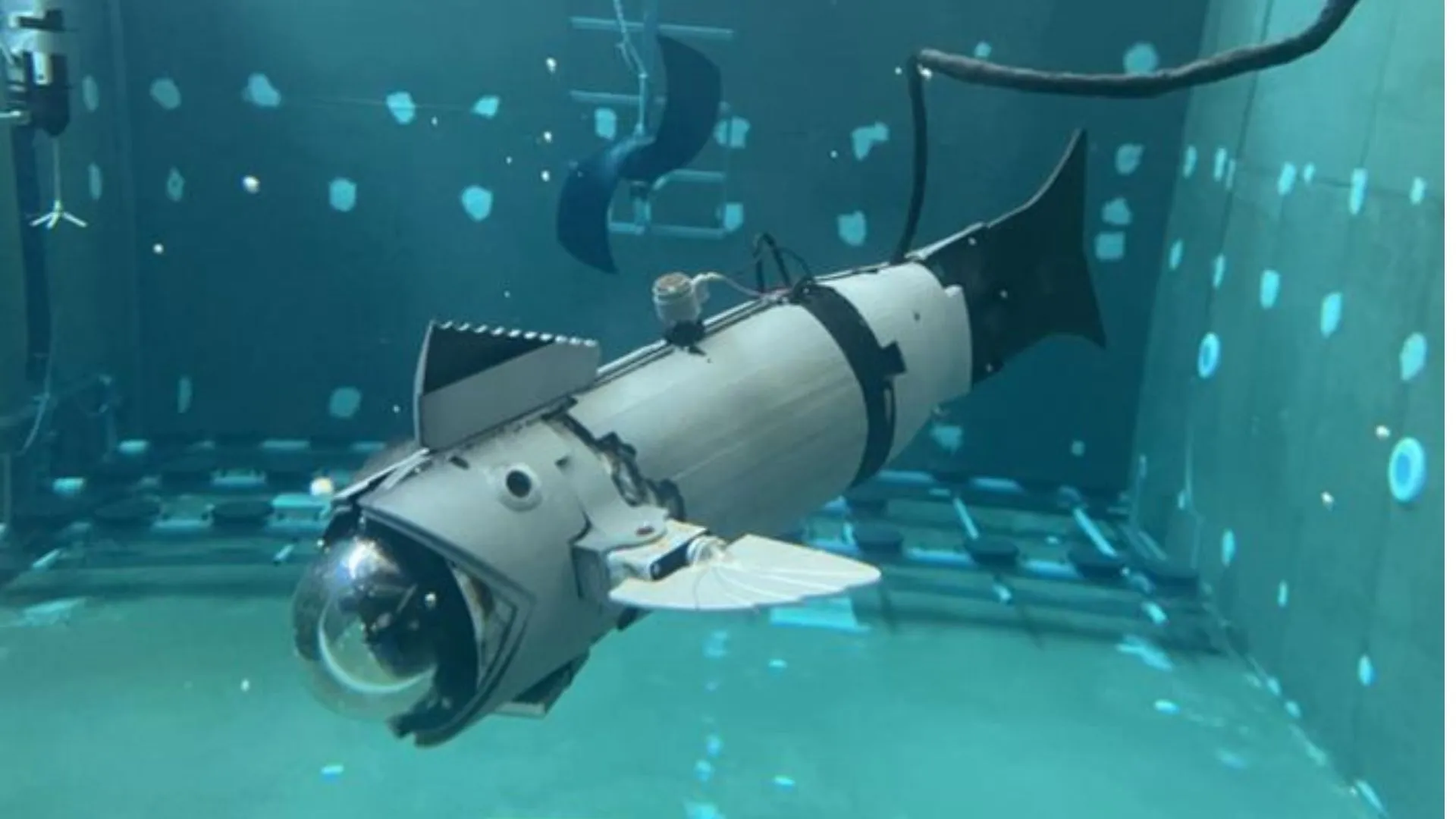
The Research Centre in Robotics and Underwater Technologies (CIRTESU) at Universitat Jaume I has tested a new way of linking robots underwater.
This week, at PortCastelló, researchers attached a surface robot to their award-winning fish using a wireless system.
The experiment’s goal was to test how well the system works outside a lab and prepare it for use in real-world scenarios in the aquaculture industry.
The robot fish is designed to inspect fish farm nets, carry sensors, and improve the maintenance of underwater facilities. The team conducted the tests in the university pool first and then in the port’s water to confirm if the technology is ready for real-world challenges.
All about the robot fish
The robot fish has been hailed as the best work in marine automation in Spain during the Spanish Automation Committee conference held in Cartagena in September. It is a carefully designed tool that combines engineering and biology.
The robot fish’s movement is powered by biomimetic fins – designed to copy the way real fish swim. This makes the robot more stable and efficient in water than standard propellers.
It also uses an umbilical communication system to stay linked to surface equipment, and an auxiliary sonar system to “see” underwater where cameras may fail. Furthermore, it uses the visual inspection system to check fish farm nets for wear, damage, and algae.
The importance of research
CIRTESU researcher Raúl Marín stressed the importance of research in separate phases.
“It is essential for us to carry out cyclic and gradual research, first in university facilities and then in a realistic environment, like the Port of Castelló, where the collaboration of the Port Authority staff has been key to achieving the progress made,” he said, as reported in the official document.
Marin also explained how this technology could be beneficial in real-world scenarios.
“This technology will decisively contribute to improving the safety and welfare of animals in fish farming, as it provides leading and sustainable solutions for the future of aquaculture,” he said, as reported in the official document.
“Our future work will focus on new robotic advances that enable net repair, within the framework of research projects and CIRTESU’s strategic line,” he added.
PortCastelló’s crucial role
Rubén Ibáñez, President of the Port Authority, also highlighted that the tests are conducted every two months in collaboration with CIRTESU. This helps solidify PortCastelló’s image as an innovation and experimentation hub for efficient, sustainable, and safe infrastructure.
In July 2024, PortCastelló and Universitat Jaume I signed an agreement granting CIRTESU access to the port’s facilities as a controlled environment for testing technologies from publicly funded projects.
The partnership helps researchers raise the Technology Readiness Level of innovations and tackle new challenges by enabling real-world trials in the marine environment.
The results of the experiment have not been disclosed yet. However, as Marin puts it, there was ‘positive progress’ achieved in the aftermath of the experiment. These trials remain part of a gradual process of testing technologies for real-time.



